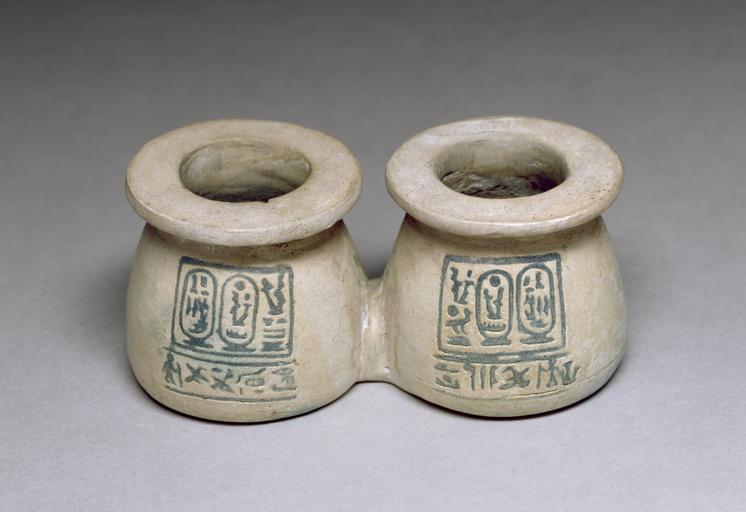MAKE A MEME
View Large Image

| View Original: | Egyptian - Conjoined Jars - Walters 48457.jpg (1799x1235) | |||
| Download: | Original | Medium | Small | Thumb |
| Courtesy of: | commons.wikimedia.org | More Like This | ||
| Keywords: Egyptian - Conjoined Jars - Walters 48457.jpg Multivessel ensembles are documented in ancient Egypt during all periods but they are particularly abundant in the New Kingdom and Late Period contexts Each of these conjoined vessels has a squat conical form tapering upward a flat bottom and a protruding lip The vessels are joined at their lower halves; traces of breakage on the side opposite the inscriptions indicate that they may have been part of an ensemble of four of more vessels Inscriptions of dark blue faience paste are inset on the front of the vessels Each inscription is composed in three columns in a rectangular frame containing the throne and birth name of Sety I Men-Maat-Re; Sety beloved of Re as well as the epithets beloved of Maat who is named Daughter of Re on the right vessel and Mistress of the Two Lands on the left vessel A line below each frame gives the name and titles of the owner of the ensemble Paser the title mentioned on the right is priest of Maat and on the left governor of the city and vizier ca 1285 BC New Kingdom Egyptian faience silica copper cm 3 7 8 5 4 3 accession number 48 457 22270 Dikran Kelekian New York and Paris date and mode of acquisition unknown Henry Walters city Baltimore Walters Art Museum Henry Walters Acquired by Henry Walters 1926 place of origin Western Thebes Egypt Walters Art Museum license Ancient Egyptian pottery in the Walters Art Museum Seti I Media contributed by the Walters Art Museum needs category review | ||||